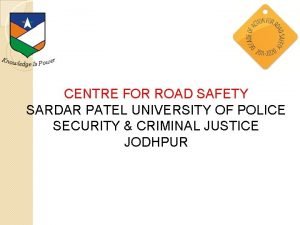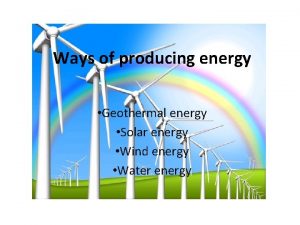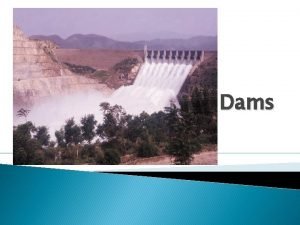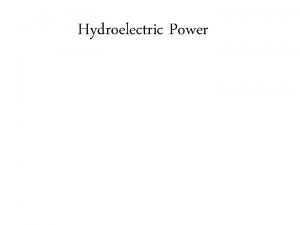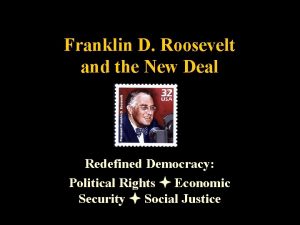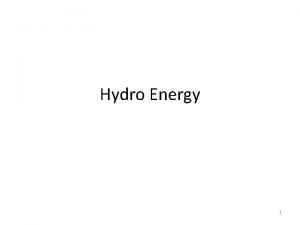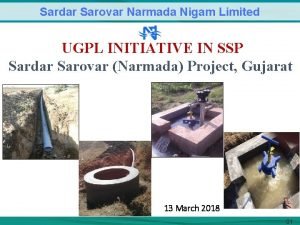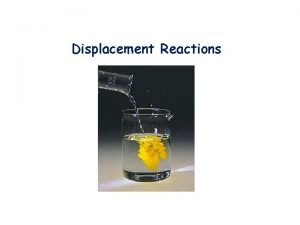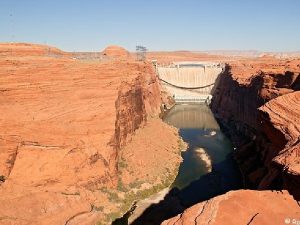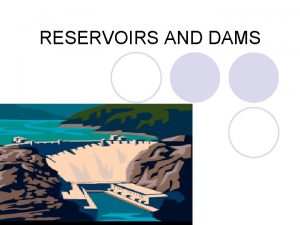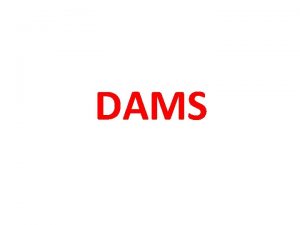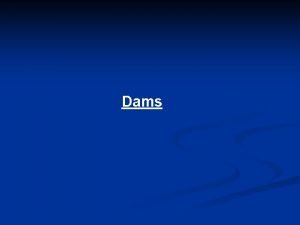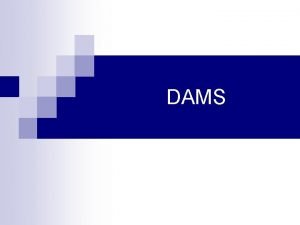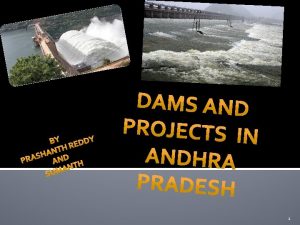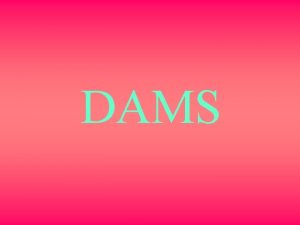Dams and Displacement Sardar Sarovar Project Conceived in















- Slides: 15

Dams and Displacement

Sardar Sarovar Project • Conceived in the mid 1960 s under Nehru • Building postponed due to disagreement between three states impacted by project: – Madhya Pradesh – Gujarat – Maharashtra


Scope of Project • Has increased at various points during the period b/w 1970 s through now • Consists of a complex project to build 3000 dams, including 3 major dams, along with a network of canals • Is justified on the grounds of eliminating water scarcity in Gujarat and Maharashtra • Madhya Pradesh most likely to face costs of submergence • In theory, all three states will benefit from “clean” hydro-electric project

Resistance to Project Medha Patekar, NBA activist • The NBA or Narmada Bachao Andolan (Save the Narmada Movement) has become the primary organization resisting the Dam • Strategies include legal challenges, demonstration, civildisobedience and other non-violent tactics • Prominent help from wellknown figures such as Arunadhiti Roy

Factors behind NBA challenges • Will displace 3 million peasants and adivasis whose villages and farms will be submerged • Will not fix water scarcity in Gujarat—only a small portion of drought-impacted lands would benefit • No just compensation has been offered to people already displaced by project, those who will be displaced as project continues will face similar issues • Cultural impact of re-settlement is a form of supression of adivasi cultural practices • Government disputes these figures

Analyzing the issue of displacement statistics • Govt. relies of figures gathered in 1979 that showed 6, 147 families would be displaced • By 2001 this number had grown to 41, 000 families (roughly 205, 000 people) • Neither set of figures includes people who would be displaced by canals (157, 000) or whose livelihoods would be permanently altered by 3000 dams—fishermen, peasants, tribals who earn a living from forest produce, etc • No attempt to keep numbers current as legal challenges drag on

Water use in India • India has freshwater reserves—but two caveats important to remember – Only Northern river systems are perennial, rest are rain-fed – These data include groundwater that is disappearing in agricultural areas • 32. 5% of renewable freshwater is being used annually, this percentage continues to grow year by year • Agricultural sector is the primary user— 92% • Domestic usage is only 5%, while Industry uses 3% of water sources



“Re-newables” includes biomass such as wood, straw used for cooking, but not necessarily eco-freindly

Developments in 1990 s • By the 1990 s the NBA won a series of important victories • The World Bank which had funded $450 million for the SS project agreed to investigate the NBA and Govt. claims • In 1992 the Morse report commissioned by the WB indicted the Indian Govt. for a poorly conceived re-settlement strategy and concluded that the NBA claims about the permanent negative impact of resettlement were valid • The World bank pulled out of the project and in 1995 work on the major dam was suspended

Govt. Response • The Indian Government found other sources of funding and re-started the project • The height of the main reservoir was now raised by 80 -85 m. • NBA challenged the govt. again leading to a court battle in the Supreme Court • 2001 judgment was a stunning blow to NBA

2001 Supreme Court Judgment • Surprising due to the Court’s previous reading of Article 21 of the constitution supporting right to a clean environment, as well as the courts’ responsiveness to PIL in the past • Read Article 21 in a narrower way; supporting the government’s right to continue with the project • References to balancing the needs of beneficiaries of the projects v. those displaced • Concerns about “mainstreaming” of adivasis • Also recognized compensation based on the 1979 NWDT award

What had changed by the early 2000? • Speculative, but more awareness of water shortage and drought in western India • Affluence of the economic boom recognized—less resistance to development projects in new court—critics cite “neo-liberal” trends that favor the private sector • NBA activists had been portrayed in many media outlets as “anti-national” and extremist • NBA has vowed to continue with the protests
 Abdel marques md
Abdel marques md Sardar patel police university
Sardar patel police university Oh mary conceived without sin
Oh mary conceived without sin Zeus perseus
Zeus perseus O mary conceived without sin
O mary conceived without sin Single displacement vs double displacement
Single displacement vs double displacement Advantages and disadvantages of dams
Advantages and disadvantages of dams Overflow dam and non overflow dam
Overflow dam and non overflow dam Caravaggio specchio
Caravaggio specchio Types of dams
Types of dams How do dams generate electricity brainpop
How do dams generate electricity brainpop Tn dams
Tn dams Forces acting on dams
Forces acting on dams Function of spillway
Function of spillway Uses of dams
Uses of dams Hydrostatic uplift on dams
Hydrostatic uplift on dams

